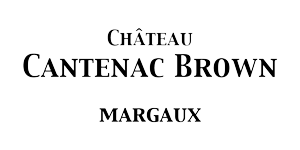To preserve your wine well, it is necessary to take care of many elements. Among these, we find of course the temperature of your wine cellar. However, this is far from being the only variable to take into account. Thus, the hygrometry, i.e. the level of humidity, of your wine cellar is a crucial element to ensure the good conservation of the wine. The Chateau Cantenac Brown team has put together a list of tips to help you preserve your wine and maintain the right level of humidity in your cellar.
What is the ideal hygrometry for your wine cellar?
The humidity level of the place where you store your wine is crucial. Indeed, too much humidity could lead to the deterioration of the labels of your wine bottles. It would be a pity to miss the label of Château Cantenac Brown because it is so unique. In addition, too high a humidity level also leads to a risk of mold development that could affect the cork of your precious bottles.
On the other hand, a too low hygrometry also entails a risk of deterioration of your corks. This time, the risk lies in the drying out of the corks, thus introducing a risk of their crumbling. As you can see, regulating the hygrometry of your wine cellar is crucial to preserve your bottles.
Thus, the ideal hygrometry for your wine cellar is between 60 and 75%. Some wine cellars allow you to measure this data directly by indicating it on a built-in hygrometer. However, if you want to do it yourself or compare this data, you can also buy this tool that will allow you to store your wine with peace of mind.
How to regulate the hygrometry of your cellar?
If the hygrometry is crucial for the good conservation of your precious bottles, it is necessary to regulate it well. For this, the procedure is naturally different depending on the type of cellar.
With an electric wine cellar
To regulate the humidity of an electric wine cellar, you have two main options. First, some wine cellars, especially aging wine cellars, have a built-in humidity control. All you have to do is set the right humidity level on the screen of your wine cellar and it will automatically adjust itself.
However, not all electric cellars have this humidity control. You can therefore choose a more traditional solution. The first step is to get a hygrometer and place it in your wine cellar. You will be able to measure the level of humidity and therefore estimate if any action is necessary on your part. If the humidity level is too low, place a bowl filled with water inside your cellar. The water will diffuse and allow you to obtain the necessary humidity for the good conservation of your bottles.
In a natural cellar
In a natural cellar, the control of hygrometry can be a little more perilous or, in any case, require a greater involvement on your part. To do this, if you notice that the hygrometry is too low, you can water the soil. If your cellar is not made of clay or does not have gravel, you can also sprinkle water in a large container filled with sand. This will help to retain the humidity in the room and thus diffuse it gradually.
On the other hand, in the case of too much humidity in your natural cellar, it will be necessary to ventilate it. If the problem persists, make sure to install an aeration or even a ventilation system. You can also place a small pile of lime in this space to absorb the humidity.
Finally, we couldn’t end this article without a little tip. Before placing your bottles in the cellar, remember to protect them with a plastic film or cellophane. The label of your bottles will be perfectly protected.


